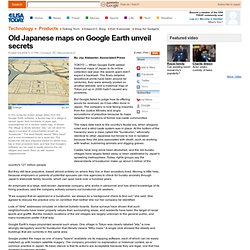

Maison de la Culture du Japon à Paris. Le thé à l'époque d'Edo. TOKUGAWA ART MUSEUM. News and Announcements [Pacific Asia Museum] Summer 2005 Return to News Archive Index Korean Culture Night The President of the Korean Arts Council John Suh and council members hosted a night of Korean art and culture at the museum on Saturday, July 16th.
![News and Announcements [Pacific Asia Museum]](http://cdn.pearltrees.com/s/pic/th/announcements-pacific-museum-111391612)
Over $10,000 was raised by the event and will be used to support the arts council’s activities and the museum’s current exhibition From the Fire: Contemporary Korean Ceramics. The evening drew 120 guests including Dr. Other highlights were a traditional Korean dance presentation performed by Lee Young-Hee and a classical music performance by members of the Korean Traditional Music Center. New Acquisitions Below Left: Sake bottle (tokurri) Attributed to Shoji Hamada (1894-1978) Japan, 20th century Stoneware and glaze Pacific Asia Museum Collection Gift of Jackie Andrews in Loving Memory of Her Mother, Florice Dent, 2005.10.1 Photo by Julian Bermudez The Collectors’ Circle has been instrumental in not only building the collection but restoring key works of art.
Sally McKay, Librarian. Kagedo Japanese Art Welcome to Kagedo Japanese Art - Kagedo Japanese Art. MOA美術館. 「 10秒美術館 」 エゴン・シーレのポケット 横山 大観. 横山大観記念館 東京のミュージアムガイド-美術館・博物館・記念館の詳細情報. ホーム|足立美術館:ADACHI MUSEUM OF ART. The National Museum of Modern Art, Kyoto. Old Japanese maps on Google Earth unveil secrets. By Jay Alabaster, Associated Press TOKYO — When Google Earth added historical maps of Japan to its online collection last year, the search giant didn't expect a backlash.

The finely detailed woodblock prints have been around for centuries, they were already posted on another website, and a historical map of Tokyo put up in 2006 hadn't caused any problems. But Google failed to judge how its offering would be received, as it has often done in Japan. The company is now facing inquiries from the Justice Ministry and angry accusations of prejudice because its maps detailed the locations of former low-caste communities. The maps date back to the country's feudal era, when shoguns ruled and a strict caste system was in place. Castes have long since been abolished, and the old buraku villages have largely faded away or been swallowed by Japan's sprawling metropolises.
But they still face prejudice, based almost entirely on where they live or their ancestors lived. Saru Gallery - Japanese prints and japanese paintings. Kondansha Library of Japanese Art. (10) TOYO SESSHU (1420-1506): Is generally regarded as Japan's greatest painter.

His Zen-inspired paintings are credited with establishing a truly Japanese style of ink painting which had a great influence on all later Japanese painting. The Muromachi, or Ashikaga, period during which Sesshu lived was profoundly influenced by Zen Buddhism, which had been introduced from China during the Kamakura period. Under its impact the Chinese-style ink paintings of the great masters of the Southern Sung period, especially the landscape painters Ma Yuan and Hsia Kuei and the Ch'an painters Mu Ch'i and Yu-chien, served as models for the Japanese painters. Not only did these artists derive their style from China, but the landscape they represented was also that of South China in spite of the fact that many of them had never been there. Sesshu was born in Bitchu Province in western Honshu. 伊香保 観光なら竹久夢二記念館(大正ロマンの森)|公益財団法人 竹久夢二伊香保記念館. The Independent Administrative Institution National Museum of Art - Collections.